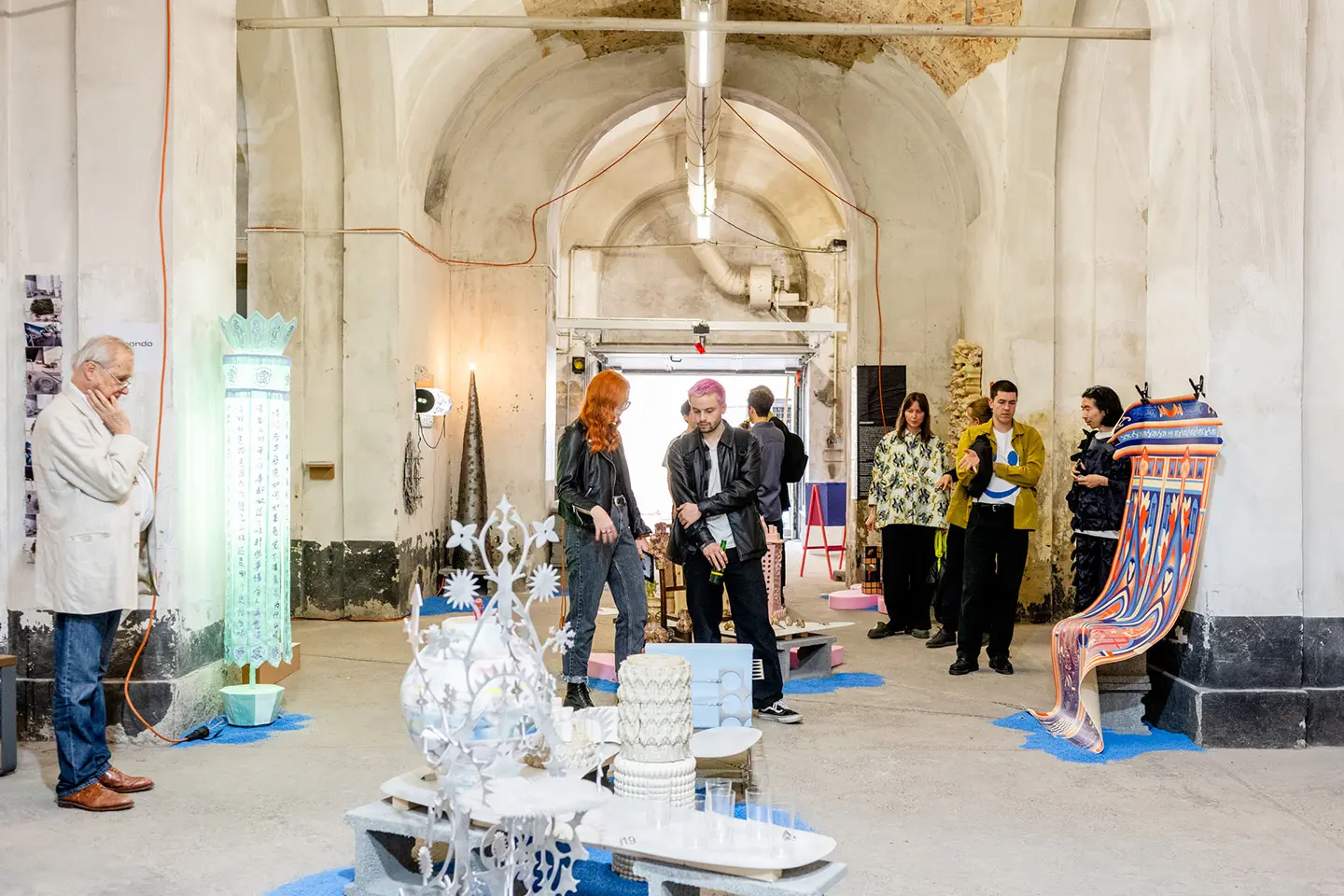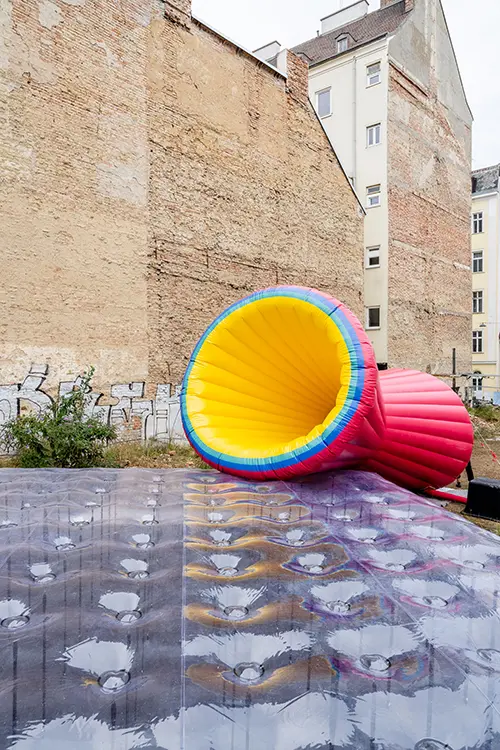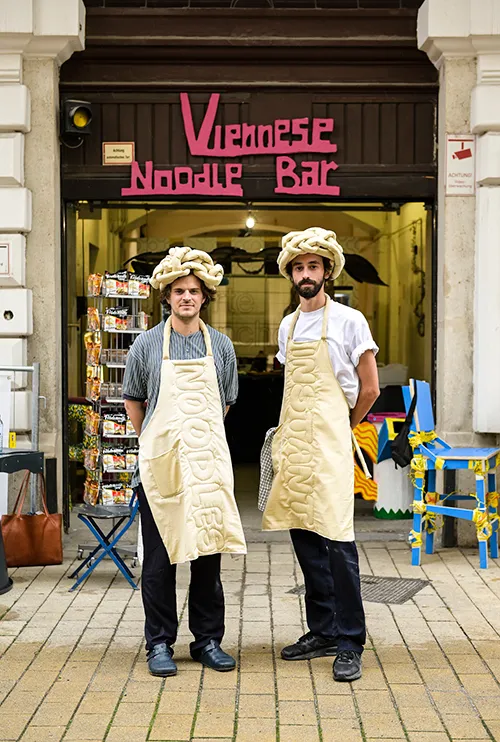In partnership with MiCodmc, a selection of establishments ripe for discovery during the 63rd edition of the Salone del Mobile.Milano, from 8th to 13th April
What we saw at Vienna Design Week 2022

Think About the Box, by Jutta Gössls at the Palmenhaus (c) VIENNA DESIGN WEEK / Karo Pernegger / Kollektiv Fischka
The projects and protagonists of the exhibition that brings contemporary design to the public in the Austrian capital, with a packed, widespread programme of exhibits, initiatives and events
Widespread, democratic, experimental and engaging: Vienna Design Week 2022 is now in its 16th edition, still channelling the spirit that has characterised it right from the outset. A great many sectors within the discipline are represented, the design of furnishing elements and other pieces for constantly upgrading our domestic living spaces, design that underpins our opportunities to get together and the services that ensure the smooth running of our collective habitation of cities and regions put under huge pressure by our need to “make things” – and then get rid of them – as well as extensive research into our material landscape.

Ornament exhibition, at GEWÖLBE (c) VIENNA DESIGN WEEK / Kramar / Kollektiv Fischka
Vienna Design Week was founded in 2007 by Lilli Hollein – now director of the extraordinary MAK Museum of Applied Arts in the Austrian capital – and two colleagues, and directed now for a second year by Gabriel Roland, who had this to say: “The festival is a large, inviting gateway to the subject of design and offers a platform, on which others can present themselves and their content. It has space for a wide range of design approaches and sectors and offers views into related disciplines. The festival architecture opens doors to questions about design that are ever-present but often elusive and makes these accessible to visitors – and it provides a roof for all those who are building the world of design, a shelter under which they can take a break from business as usual in order to reflect, get their bearings, and exchange ideas.”

Gabriel Roland (c) © Mafalda Rakoš / VIENNA DESIGN WEEK
Contemporary design
Vienna Design Week illustrates just how design impacts the most private areas of all our lives, including the design of changes within macrosystems, enabling their dynamics to be revolutionised. All this design potential is tremendously valued in Vienna, thanks to the wide range of stances on a varied scenario that affects everything we produce, which has to be constantly explored, investigated, questioned and rethought all over again even when the previous model still shows no sign of giving out. Thus the results and works in progress are showcased, by a joyful community of “problem solvers,” inspired by a desire for progress, devisers of objects/systems/services that respond to concrete needs, as Roland pointed out in his introduction to the tour. The following goes into greater detail of how VDW pans out.

Spezial - Design Kreis - Konklave (c) Design Kreis, Vienna Design Week
The Focus district
One of the great strengths of Vienna Design Week is that its packed programme is held in different city districts each year. This year is the turn of the area around Mariahilfer Straße, which lies outside the most central ring of the city, but is full of fashionable restaurants, shops, galleries and hotels. It’s an opportunity to explore the network of alleyways, little hidden squares and courtyards and to explore the relationship between the local identity and the shop-lined streets in a place that was gentrified quite some time ago. Many of the initiatives are therefore being held in this area.

Installation at Gstättn (c) VIENNA DESIGN WEEK - Kramar - Kollektiv Fischka, Vienna Design Week
The GSTÄTTN contemporary “biergarten”
It kicks off with a small piece of land in Mollardgasse where there’s a public open-air space, home to the event’s biggest installations. There’s a large table right in the centre, with benches on all sides, which swells and contracts in a wavelike rythm, allowing those using this urban furniture to be together, eat and work, find places in which to regroup and or to be on one’s own, as catered for by the company behind it, Miramondo, which attributes great importance to the public space given that it is “the largest space in the world.” The beer garden, which is also home to a Korean/Viennese street food-kiosk, is dotted with the large OK SOLAR lamps devised by the designer Stefan Diez and his students at Vienna’s University of Applied Arts, the speculative project by Lucy Li that rethinks geographical orientation within the contemporary context and the new Polestar electric car, while at the far end three large inflatable pieces created by Frieder Bohaumilitzky, whose workshop is fairly close-by, designed by Ursula Klein underscore the fact that by filling the space – even with air! – form can be given to political and social statements. The latter project is part of the Passionswege programme, which matches Austrian designers with Viennese producers and craftspeople, triggering new perspectives on the work of both.


 Salone Selection
Salone Selection














